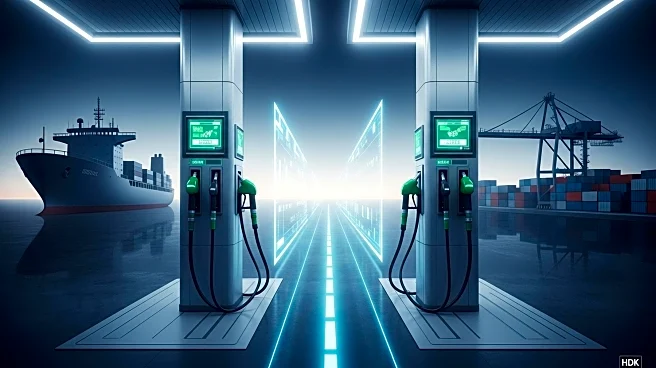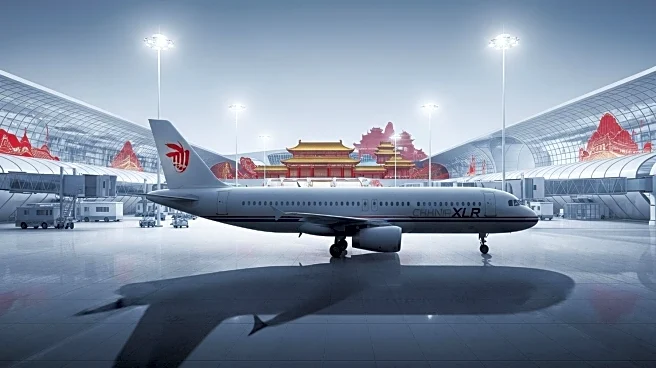What's Happening?
The Singapore-India Green and Digital Shipping Corridor aims to enhance clean-fuel bunkering and infrastructure in the maritime sector. This initiative aligns with the International Maritime Organization's target of net-zero emissions by 2050. India, with its substantial renewable energy capacity, is positioned to produce zero- or near-zero-emission fuels. The corridor will facilitate the development of infrastructure and technologies supporting low-emission fuels and digital information exchange between ports. This partnership is expected to attract vessels seeking cleaner fuel supplies, thereby boosting port operations and related industries.
Why It's Important?
The establishment of the Singapore-India corridor represents a significant step towards sustainable maritime practices. By promoting clean-fuel bunkering, the initiative supports global efforts to reduce emissions and combat climate change. This development could lead to increased investment in renewable energy and related technologies, fostering economic growth and innovation. Additionally, the corridor enhances regional cooperation and trade, potentially serving as a model for other countries seeking to implement similar initiatives. The focus on digitalization also offers opportunities for improving efficiencies and cost-effectiveness in port operations.
What's Next?
As the corridor develops, stakeholders will need to address challenges related to infrastructure development and regulatory compliance. The maritime industry may see increased adoption of alternative fuels and energy-saving technologies, such as wind-assisted propulsion systems. The partnership could expand to include other countries, broadening its impact and coverage. Continued collaboration between Singapore and India will be crucial in achieving the corridor's objectives and ensuring its long-term success. The initiative may also influence global maritime policies and practices, encouraging further investment in sustainable solutions.












